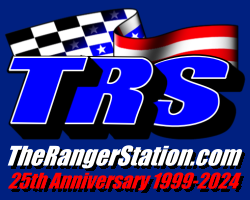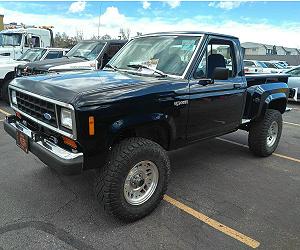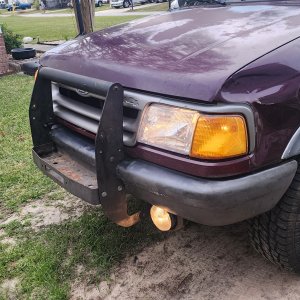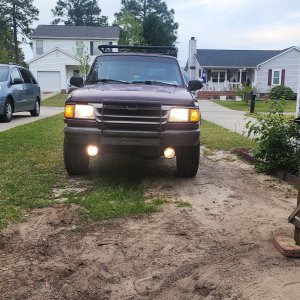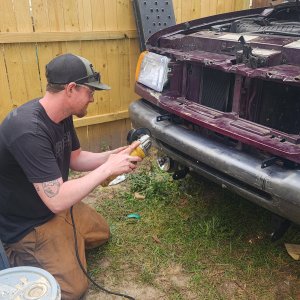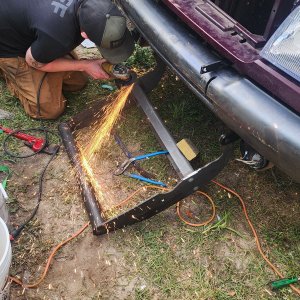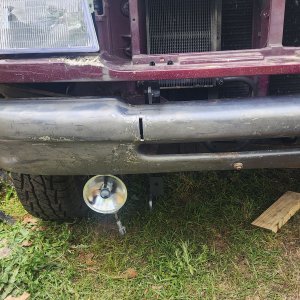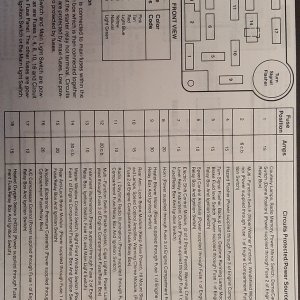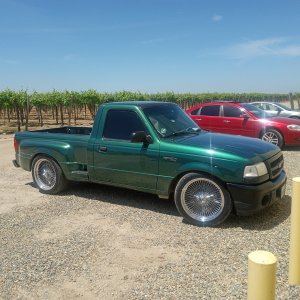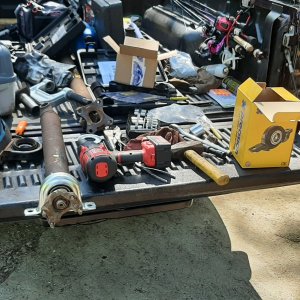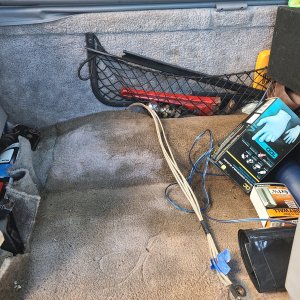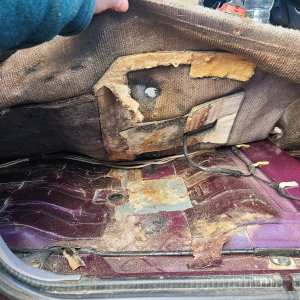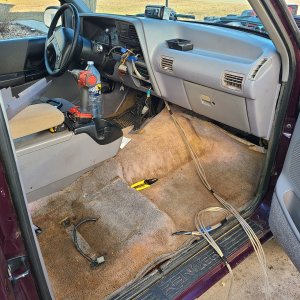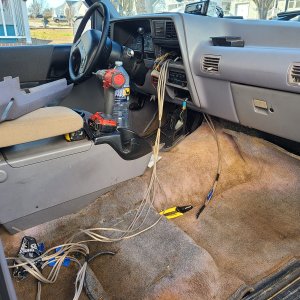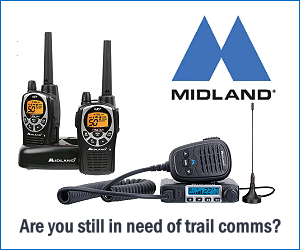Tag axle Part I swing arm
Before any of you even think about doing something this stupid, read my disclaimer, posting #10 in this thread
The concept: Google how “B train” tractor trailer trains are put together out west. It provides much more stability going up and down the mountains and around the bends than the “A train” dollies used in the Midwest and the East Coast on relatively flat highways. B trains use fifth wheels and pins the whole length vs military hitch rings on A trains. The back axle of the unit in front sticks out behind the unit in front, and it becomes the front axle of the trailer that goes next, etc. etc. like a little red wagon.
In my travels in China and in Asia, this set up is used as well, but just on a truck and single trailer. They have little tiny diesel trucks with tough transmissions, and this set up let’s them pull pretty heavy long trailers. If you think about it, you are literally pulling the trailer like a little red wagon instead of carrying the front end of the trailer on the back of the truck.
I’m not sure mine is exactly what they do, I never looked that close, but the China stuff was really the inspiration. Also my pin will be a 2 inch ball, and my “fifth wheel” is an upside down 2 inch A shaped trailer coupler.
And I would be lying if I said I had a “design“ for this. It was a concept in my noodle that I kind of put together as I went with what was in my junk pile.
Sooooo, I stripped everything behind the cab except the axle and springs and shocks. I didn’t remove any of the original cross pieces and such until I pretty much got the swing arm assembled in place to keep all the alignment.
I started with the pivot arm for the top of the swing arm. I had some 2 x 2 x 1/4“ steel, just like a 2” hitch bar. I welded HVAC 3/4” rod hangers on each end, exactly the width of the inside of the frame overall. I got 6 radius plates, 12 hangers and about 25 three-quarter inch by 6 foot threaded rods for $100 a while back without even knowing what I’d use them for.
Those hanger angle straps are about an inch and a half wide, and about a half inch thick, very heavy duty. And I welded spring hangers to the bottom of the cross piece just inside the frame. That’s where the arm pivots.
I hooked that pivot bar across and inside the frame, and of course it wouldn’t go all the way straight. I use the 8 pound adjustment tool I referenced earlier, and I pounded it around to get it between the rails, with just a tiny bit of friction left. I aligned it just behind the front axle, and I bolted it in with 4 half-inch bolts.
For the upper swing arm, I cut the center out of a class 4 receiver from an E350 van ($35 pull a part with bolts). I welded two D-shaped 2 x 4 pieces of not-so-square stock I cut out of a trailer tongue from a boat trailer on the bottom.
I spaced the back axle from the front axle by putting tires on everything and then putting a 2 x 4 between the tires. I held the axles together with ratchet straps.
From this precision set up, I bolted two axle hangers to the bottom of the Ranger frame just in front of the pivot arm hanger. Then I welded a couple more spring hangers outside the D tubes under the receiver for the shackles to the axle. Hence, the new springs run inside the OEM springs, not behind them.
The pivot arm pivots under the frame crosspiece, and the front of the springs pivot under the frame, and then there are shackles between the bottom of the pivot arm and the back of the springs. I made those shackles out of 1 1/2 x 1 1/2 x 1/4” angle iron using regular trailer bolts.
The second axle had to be independent and able to swing up so I never took the traction off the drive axle if I went over a curb or speed bump or such. I set it up where it can ride up on an 8 inch curb without the front axle leaving the ground. It will actually travel up more than that, but it won’t pivot down hardly at all, especially with the load.



After I bolted it together, and I test drove it riding down the road, the back axle would actually bounce up off the ground once in a while. I went to the pull a part and I got some coil over shocks from a Toyota mini crossover, from the rear axle. Of course I had to add my Rustoleum red and yellow for effect. It may look like those coil overs are what’s holding up the frame above the tag axle, but actually the only purpose of those shocks and springs is to put a little tiny bit of down load on the back axle to keep it from bouncing. When I test drove it again, they may be too stiff. I only want a couple hundred pounds max of downforce. Right now I’m thinking I’ll pull the coils and cut a little bit off very slowly to where they just sit between the two ends unloaded. If that fails, I will have to get some lighter coil overs.
The complete swing arm assembly fits underneath the original Ranger frame cross pieces. To install the hitch, I had to remove the back cross piece to allow for swing travel. Using my free bedframe stock, I bolted a cross piece on top just in front of the pivot arm bar, and I bolted another across the top just before the ends of the frame and in front of where the hitch swings up and down. With the pivot arm crossbar low, those three should remove any toe in or toe out of the frame rails. I puckered my butt and I ground off the rivets and removed the back cross piece. I used a 36 inch pipe wrench to gently wiggle the frame rails back and forth to see if there was any play. None at all. Also, if you look at all the geometry, the loading is in tension or in compression, very little twisting with the ball mount.

The “5th wheel“ is actually an A-style coupler that I put in upside down. The wide back is bolted above the receiver bar with a 2“ x 4“ spacer that came out of another trailer tongue, more heavy duty. I had another class 3 receiver that was bolted together. I used the frame flanges upside down on top of the D tubes, and I had more 2x2x1/4” stock that I ran between them. The front of the coupler is welded and bolted to the cross bar.
Through the whole thing, I followed the automotive principles about what should be bolted and what should be riveted to allow for flex. My bolts being the equivalent of the rivets, all with locking nuts.
The 2 x 2 thin tubing frame above all this in the pictures has nothing to do with the swing arm. It is a light weight frame to just hold the diamond plate on top, and to hold the fenders. I built it early and mounted it a few inches above the frame, all very square and true, and I used it for measuring down to this and that and side to side to make sure things were square. Both fenders are actually attached to this tubing above the frame, and the back axle floats up and down underneath that fender.
A few things about the geometry and loading: The Ranger springs are much longer and softer than the tag axle springs. The tag axle is a 3500 pound axle I cut to length, adding stiffeners. The springs are shorter and much stiffer. This doesn’t matter nor affect the truck’s driving because it actually pulls behind the truck, it is not underneath it.
The two front mounting points are actually closer together height wise than the length of the shackle on the back end. That is actually on purpose to make the up and down motion stiffer.
The location of the trailer ball is actually mid height between the frame rails. The back spring is not mounted level, it angles downward towards the back. This way, the trailer force pulling or stopping is exactly along the length of the frame, and when stopping, it actually pushes the frame down just a hair.
The ball is mounted just slightly forward of the rear axle, and it is mounted on the swingarm, not on the frame. When the ball and swingarm are loaded, half the load is on the frame in the front, but the rear literally floats in mid air. That gives the proper weight balance over the front axle without overloading it, even with a very heavy trailer. I haven’t done it yet, I’m waiting for the trailer, but the rear axle and both the trailer axles will have electric brakes, with a trailer battery set up for an emergency lock up if power is lost to the trailer.
Fenders, tail light assemblies, and wiring or next.





